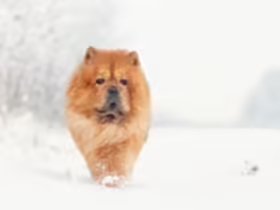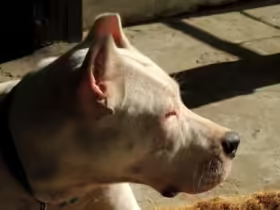The Alaskan Malamute is a large, powerful, and loyal breed originally bred for strength and endurance in the cold Arctic regions. Known for their loyalty, intelligence, and strong work ethic, Alaskan Malamutes make great companions for active families but require knowledgeable care and training due to their independent nature. This guide covers essential insights into the Alaskan Malamute’s temperament, training needs, and general care to help you raise a healthy, well-adjusted pet.
Table of Contents
- Breed Overview
- Temperament and Personality
- Training Needs
- Exercise Requirements
- Nutrition
- Health Concerns
- Creating a Balanced Environment
- Final Thoughts
1. Breed Overview
- Breed Group: Working Group
- Height: 23 to 25 inches
- Weight: 75 to 85 pounds
- Lifespan: 10-14 years
- Coat Type: Dense double coat, seasonal heavy shedding
The Alaskan Malamute is one of the oldest Arctic sled dogs, originally bred by the native Inuit tribes of Alaska to haul heavy loads over long distances. With a powerful build, wolf-like appearance, and strong endurance, this breed is not only stunning but also one of the hardiest working breeds, making it an ideal choice for people with an active lifestyle and cold-weather conditions.
2. Temperament and Personality
Alaskan Malamutes are known for their loyalty, intelligence, and pack-oriented nature.
- Friendly and Loyal: Malamutes are incredibly loyal and affectionate with their families, often forming strong bonds with their owners.
- Independent and Strong-Willed: Known for their independence, Malamutes require an owner who understands how to handle their determined nature.
- Playful and Social: Despite their imposing appearance, Malamutes are generally friendly with people and other dogs, though they may show dominance.
- High Prey Drive: Malamutes have a strong prey drive and may chase smaller animals, so socializing them with other pets early on is important.
Tip: Early socialization and training help Malamutes develop a balanced temperament and adapt well to various environments and social situations.
3. Training Needs
Training an Alaskan Malamute requires patience, consistency, and a firm but gentle approach.
- Positive Reinforcement: Use treats and praise to encourage good behavior, as Malamutes respond best to positive reinforcement.
- Early Socialization: Socialize your Malamute from a young age with different people, dogs, and environments to reduce their natural wariness of new situations.
- Obedience Training: Basic commands like sit, stay, and recall are essential, especially due to the breed’s size and strength.
- Boundary Training: Malamutes are known for their escape tendencies, so it’s crucial to train them to respect boundaries, especially in open spaces.
Training Tips:
- Be Patient and Consistent: Malamutes are intelligent but can be stubborn, so a consistent training approach is key.
- Short, Engaging Sessions: Malamutes have a short attention span, so keep training sessions brief and engaging to hold their interest.
- Prevent Boredom: Mental stimulation is essential to prevent behavioral issues, as bored Malamutes may become destructive.
4. Exercise Requirements
Alaskan Malamutes are high-energy dogs that need regular exercise to stay healthy and happy.
- Daily Exercise: Aim for at least 1-2 hours of vigorous exercise daily, such as long walks, hiking, or running.
- Structured Play: Engage them with fetch, tug-of-war, and other interactive games to provide physical and mental stimulation.
- Cold Weather Activities: Malamutes thrive in cold weather and enjoy activities like pulling sleds or carts, especially in snowy conditions.
- Fenced Yard: A secure, spacious yard is ideal, as Malamutes love to roam and need a safe space to expend their energy.
Tip: Avoid off-leash activities in unfenced areas, as Malamutes tend to wander and may not reliably respond to recall commands.
5. Nutrition
Proper nutrition is essential to support the high energy levels and overall health of an Alaskan Malamute.
- High-Quality Protein: Malamutes need a protein-rich diet to support their muscular build and energy requirements.
- Joint Support: Include foods or supplements with glucosamine and chondroitin to maintain joint health, especially as they age.
- Portion Control: Malamutes can be prone to weight gain if overfed, so monitor portions carefully.
- Hydration: Ensure fresh water is available, especially during warmer months or after exercise.
Feeding Tip: Divide meals into two portions to help prevent bloat, a condition that can affect large breeds like the Alaskan Malamute.
6. Health Concerns
Alaskan Malamutes are a generally healthy breed but are predisposed to certain health issues. Regular veterinary checkups are essential to maintaining their well-being.
- Hip Dysplasia: Common in larger breeds, hip dysplasia affects joint health and mobility, often causing discomfort in older dogs.
- Hypothyroidism: This hormonal imbalance can lead to weight gain, lethargy, and skin issues.
- Eye Conditions: Malamutes are prone to cataracts and progressive retinal atrophy, so regular eye checkups are recommended.
- Polyneuropathy: This genetic disorder affects the nervous system and can lead to muscle weakness and coordination problems.
Preventative Care: Regular vet visits, a balanced diet, and controlled exercise can help prevent or manage these health issues.
7. Creating a Balanced Environment
Malamutes need an environment that provides structure, social interaction, and mental stimulation.
- Structured Routine: Set a daily routine for feeding, exercise, and training to help Malamutes feel secure and reduce anxiety.
- Social Interaction: Malamutes thrive on social interaction and need consistent engagement with family members or other dogs.
- Secure Outdoor Space: A fenced yard is ideal, as Malamutes have a natural instinct to roam and may try to escape if not properly contained.
- Indoor Enrichment: Provide toys and activities for indoor play, particularly during warmer months when Malamutes may be less active outdoors.
Tip: Avoid leaving a Malamute alone for extended periods. Their social nature can lead to destructive behavior if left unattended or bored.
8. Final Thoughts
The Alaskan Malamute is a strong, loyal, and intelligent breed that can bring immense joy and companionship to an active and knowledgeable owner. However, due to their independent nature, high exercise requirements, and strong prey drive, they are best suited for people who can dedicate time, effort, and patience to their training and care.
With the right approach, you can raise a well-adjusted, healthy, and happy Alaskan Malamute who will be a loving and loyal companion for many years.











Leave a Reply